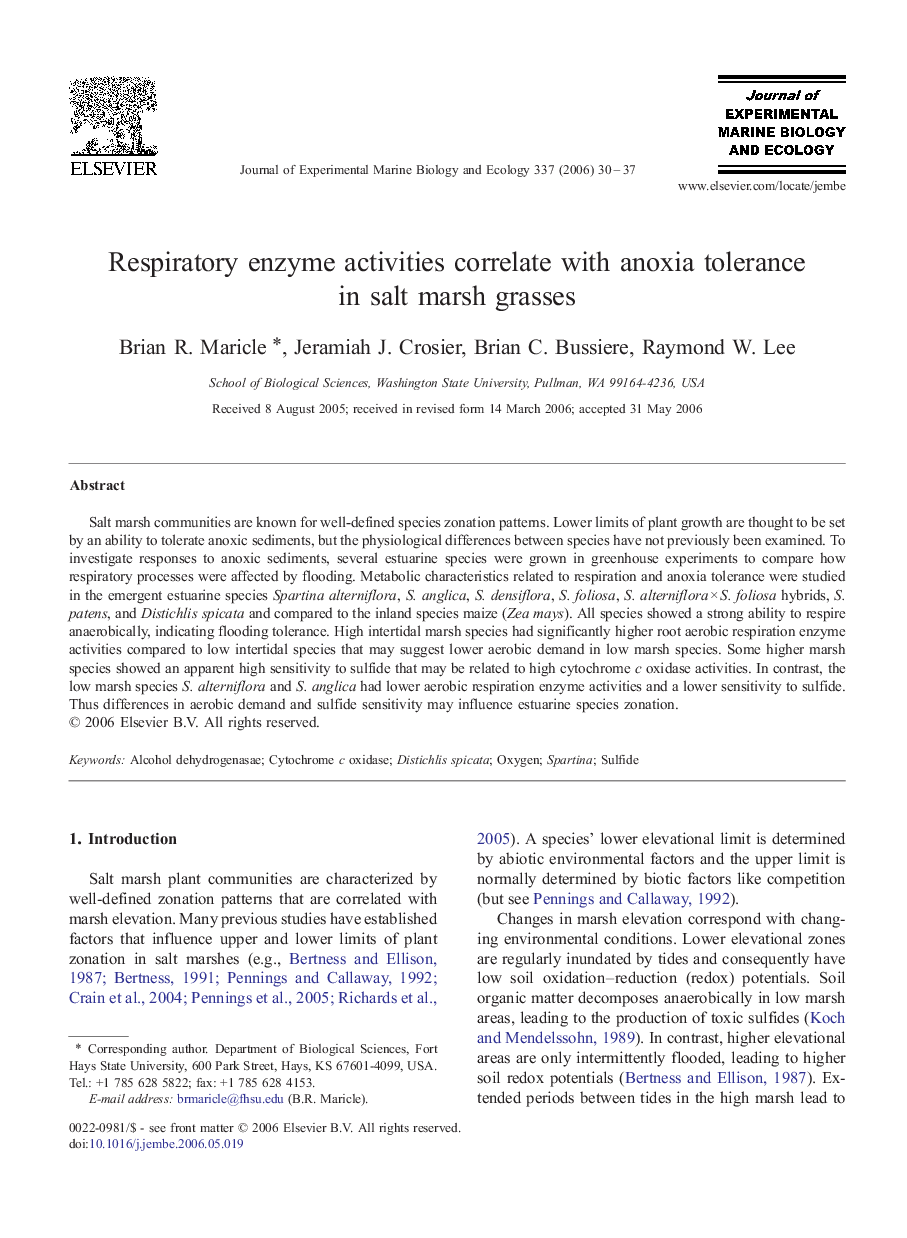| Article ID | Journal | Published Year | Pages | File Type |
|---|---|---|---|---|
| 4398047 | Journal of Experimental Marine Biology and Ecology | 2006 | 8 Pages |
Salt marsh communities are known for well-defined species zonation patterns. Lower limits of plant growth are thought to be set by an ability to tolerate anoxic sediments, but the physiological differences between species have not previously been examined. To investigate responses to anoxic sediments, several estuarine species were grown in greenhouse experiments to compare how respiratory processes were affected by flooding. Metabolic characteristics related to respiration and anoxia tolerance were studied in the emergent estuarine species Spartina alterniflora, S. anglica, S. densiflora, S. foliosa, S. alterniflora × S. foliosa hybrids, S. patens, and Distichlis spicata and compared to the inland species maize (Zea mays). All species showed a strong ability to respire anaerobically, indicating flooding tolerance. High intertidal marsh species had significantly higher root aerobic respiration enzyme activities compared to low intertidal species that may suggest lower aerobic demand in low marsh species. Some higher marsh species showed an apparent high sensitivity to sulfide that may be related to high cytochrome c oxidase activities. In contrast, the low marsh species S. alterniflora and S. anglica had lower aerobic respiration enzyme activities and a lower sensitivity to sulfide. Thus differences in aerobic demand and sulfide sensitivity may influence estuarine species zonation.
